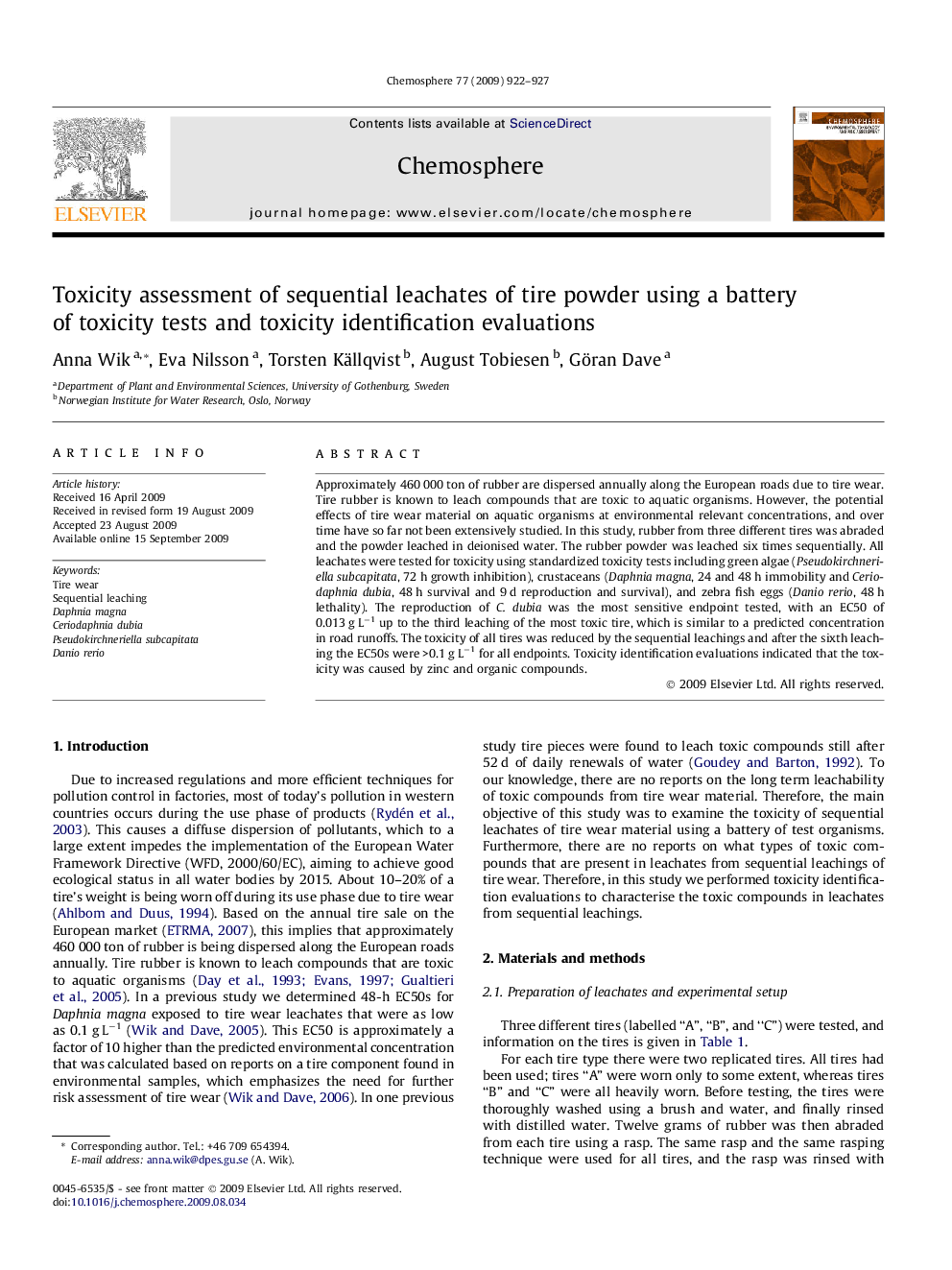| Article ID | Journal | Published Year | Pages | File Type |
|---|---|---|---|---|
| 4412434 | Chemosphere | 2009 | 6 Pages |
Approximately 460 000 ton of rubber are dispersed annually along the European roads due to tire wear. Tire rubber is known to leach compounds that are toxic to aquatic organisms. However, the potential effects of tire wear material on aquatic organisms at environmental relevant concentrations, and over time have so far not been extensively studied. In this study, rubber from three different tires was abraded and the powder leached in deionised water. The rubber powder was leached six times sequentially. All leachates were tested for toxicity using standardized toxicity tests including green algae (Pseudokirchneriella subcapitata, 72 h growth inhibition), crustaceans (Daphnia magna, 24 and 48 h immobility and Ceriodaphnia dubia, 48 h survival and 9 d reproduction and survival), and zebra fish eggs (Danio rerio, 48 h lethality). The reproduction of C. dubia was the most sensitive endpoint tested, with an EC50 of 0.013 g L−1 up to the third leaching of the most toxic tire, which is similar to a predicted concentration in road runoffs. The toxicity of all tires was reduced by the sequential leachings and after the sixth leaching the EC50s were >0.1 g L−1 for all endpoints. Toxicity identification evaluations indicated that the toxicity was caused by zinc and organic compounds.
